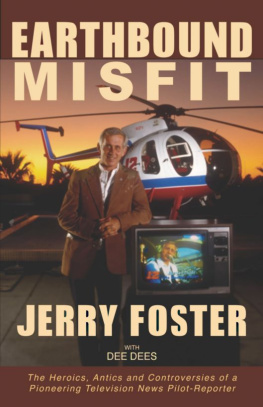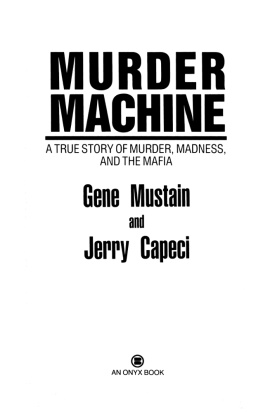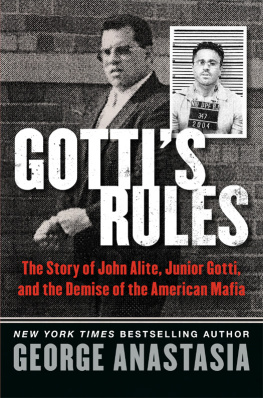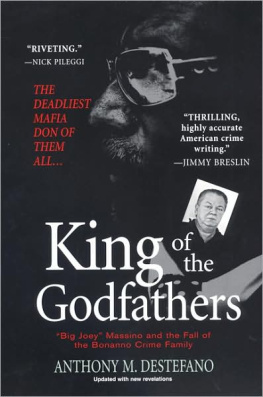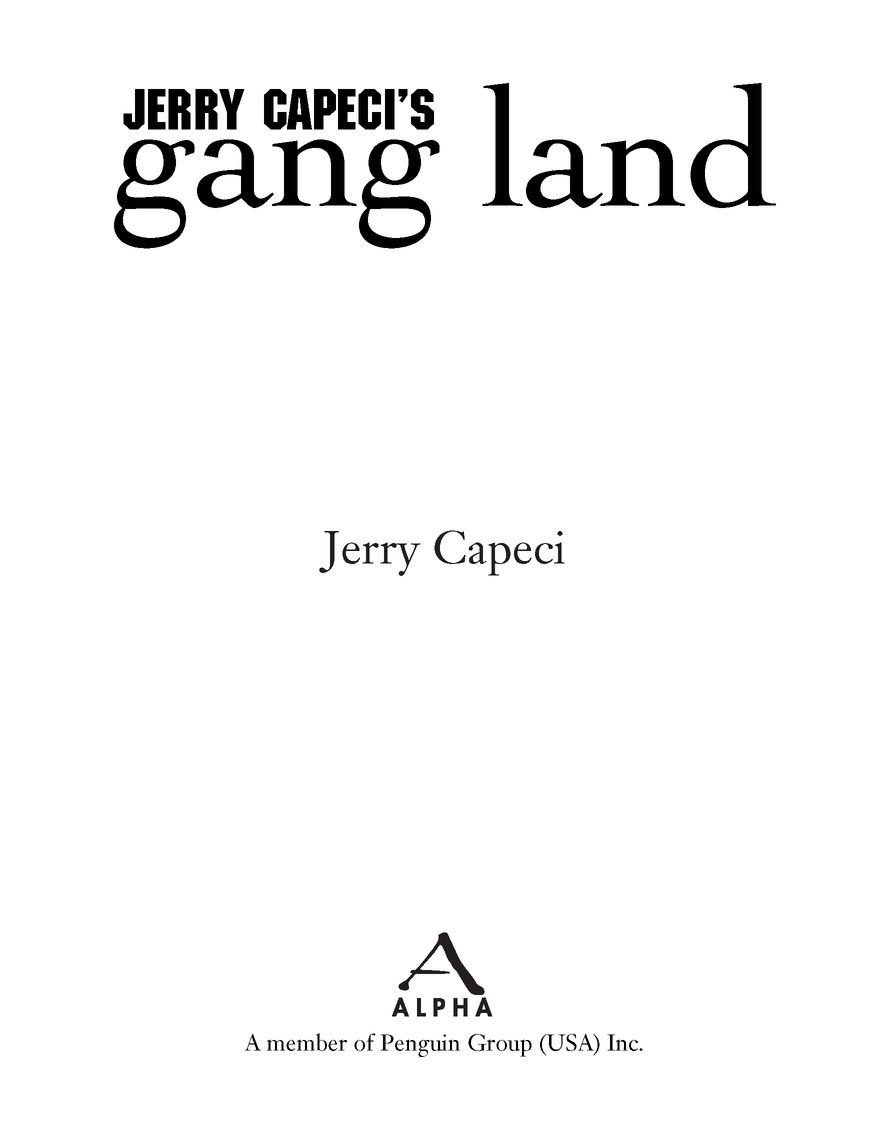Table of Contents
Murder Machine
The inside story of a single Brooklyn gang that killed more Americans than the Iraqi army. Youll be ducking for cover on every page.
Mike McAlary, columnist, New York Post
In a masterpiece of crime reporting, the authors re-create the DeMeo underworld in gripping detail. A MASTERPIECE OF TRUE CRIME REPORTING.
Publishers Weekly
A modern-day Murder Incorporated A vicious Gambino crime family crew so brutal that even John Gotti feared them. A vivid, chilling tale of mob treachery and depravity that should dispel any remaining romantic myths about Mafia life. HIGHLY RECOMMENDED.
Library Journal
First-rate story of a Mafia murder crew so deadly that even John Gotti turned aside a contract on its leader. Vivid, hair-raising, day-to-day-in-the-life-of narrative: the BEST MOB BOOK IN RECENT MEMORY
Kirkus Reviews
THE MOST AMAZING WISEGUY STORY YET. Its the saga of a crew of killers run amok, a cross between The Godfather and The Texas Chainsaw Massacre.
Gail Collins, columnist, New York Newsday
Mob Star: The Story of John Gotti
What a fascinating portrait theyve drawn of this man Gotti: Handsome, ambitious, quick-witted, and enormously successful in his own way. But at heart (he is) a beast that will tear your throat out just for the fun of it.
Mike Royko, Pulitzer Prize winning columnist and author of Boss
Tireless reporting and tight sentences that make you run to the next page.
Jimmy Breslin, Pulitzer Prize-winning columnist and author of The Gang That Couldnt Shoot Straight
A fascinating look at John Gotti, the ultimate wiseguy.
Nick Pileggi, author of Wiseguy and Casino
The Complete Idiots Guide to the Mafia
Mobspeak is put in laymens terms. Capeci lays down the codes and rules and describes the crime families. He details the chain of command. He tells about those who inspired The Sopranos and examines killings, convictions and the board of directors, plus other questions most people are too scared to ask.
New York Daily News
You dont have to have a high mob I.Q. to enjoy (this book).
Newark Star-Ledger
(In this book) Capeci gives us the results of the research that has been the spine of his journalistic life. Nobody knows more about the subject.
Pete Hamill, best-selling author and columnist
PREVIOUS PAGE: Policemen carry the body of reputed Mafia leader Carmine Lilo Galante from the Joe & Mary Italian-American restaurant in Brooklyn, N.Y., Thursday, July 12, 1979. Galante was shot and killed while lunching in the restaurants backyard. (AP Photo)
For Hap Hairston, editor extraordinaire and good friend; always
there for meand Gang Landuntil the end.
Foreword
Its about time someone collected Jerry Capecis Gang Land columns into a book. The mans been writing history for several years now, shining his light on a landscape of interest to crooks, cops, gangsters, agents, prosecutors, lawyers, judges, buffs, journalists, and no doubt a few scholars. Jerry and his light have staying power.
Meanwhile, many of the incorrigibles hes told us about are history. Unlike those gonefellas, to borrow from a famous headline over a New York Daily News story about mafia boss John Gotti finally getting sent downriver by a jury, Jerry and his column are still open for business, on and offline, some 15 years after the doors opened. The names and the stories change, but Jerry endures.
At the Daily News, I camped next to Jerry for several years. Now that I think about it, we wrote that story with the gonefellas headline. Our desks were in a four-desk arrangement that we called the pod. At different times over the years, the pods other two desks were occupied by big talentsGail Collins, Mike McAlary, Ying Chan, and Tom Robbins.
Of those people, I was the newest to New York. I learned a lot from all of them, but I learned the most about New Yorkand about being a reporter in itfrom Jerry. He was New York in a way the rest of us could never be. He was Brooklyn born and bred, and had worked his way up from the shackthe press room at police headquarters where newspapers send young reporters to learn how things work.
Jerry learned well. He became a law enforcement expert. He learned how to dig out information. He developed an army of confidential sources. I began becoming the beneficiary of this when I arrived from Chicago at the Daily News in 1986, not long after the News coaxed Jerry over from the New York Post. The News was redesigning its newsroom and after it was over, I ended up next to Jerry in the pod. Unlike Jerry, I had never spent a day in a police shack. I was always a general assignment reporter. I liked the variety, but the cost was that I never became an expert at anything.
One day the News assigned me to do a feature story on the hubbub at Gottis first federal trial; he had just arrived sensationally on the scene as the main suspect in the beautifully choreographed assassination of the man he was said to have replaced as Gambino family boss. The trial had to do with other crimes, but it was the medias first chance to see him up close. I constructed a little story based on Gottis courtroom act (co-defendants stood when he entered the room) and interviews with little old ladies craning at the courtroom door to get a peak. An ambitious literary agent saw the piece, called me up and the next thing you know I had a contract to write a book about Gotti.
I was about the least qualified reporter in New York for the job. It took me a few seconds to realize I needed someone who knew the territory, and so the Jerry-Gene partnership was born. We wrote that book, Mob Star: The Story of John Gotti, and were deep into our second, Murder Machine, before I really got to know him. But during those two years, I learned what a reporters reporter he was. Stuff we needed, he just got. Not just the easy stuff, like public records, but the private records that for various legal reasons dont get into trial transcripts. Jerry got these extracurricular files, reports, and memosmaterial that made it possible for us, without the cooperation of Gotti and other gangsters, to recreate scenes and conversations from their lives, develop their characters, tell their stories.
It was not until we lost our day jobs that I began to get to know Jerry well. In the fall of 1990, the News provoked a strike by trying to shove new contract terms down the throats of its union truck drivers. Im sure that it never crossed Jerrys mind to do anything but to join in solidarity with these workers and go on strike too. I followed him, but he had a lot more to lose. His column was going great, he had a mortgage and three kids on their way to college. But Jerry, as I was getting to know, lived his life by some core beliefs. One was, you have to stand up to bullies.
Jerry became one of the strikes leaders, as both strategist and spokesman. As the strike dragged on and moved into 1991, he and some others cooked up an idea sure to get our cause some notice. We would invade the News Brooklyn office, barricade ourselves inside and wait for the cops to come evict us while all our friends in other media recorded the proceedings. It went off perfectly. Using keys the


